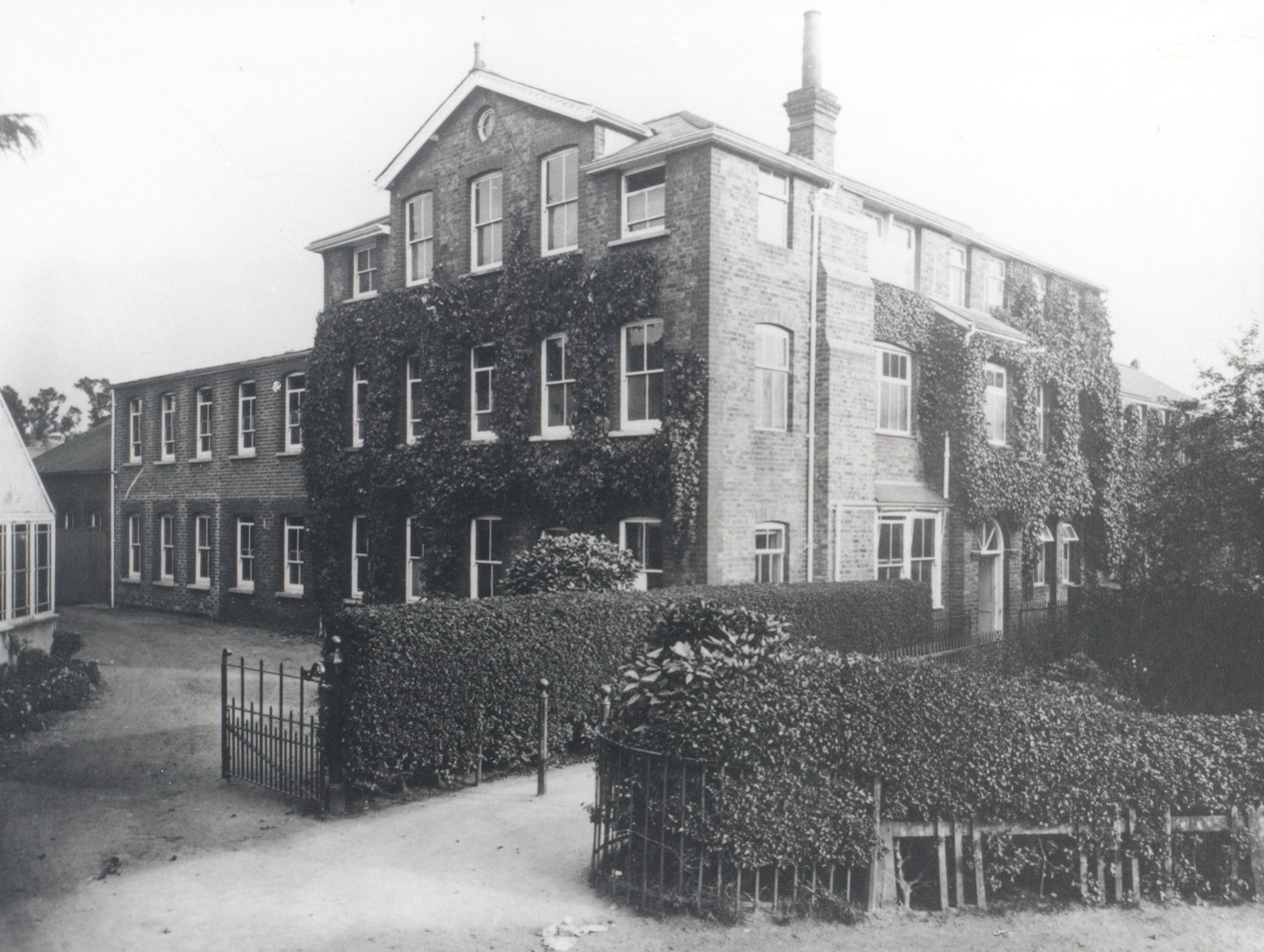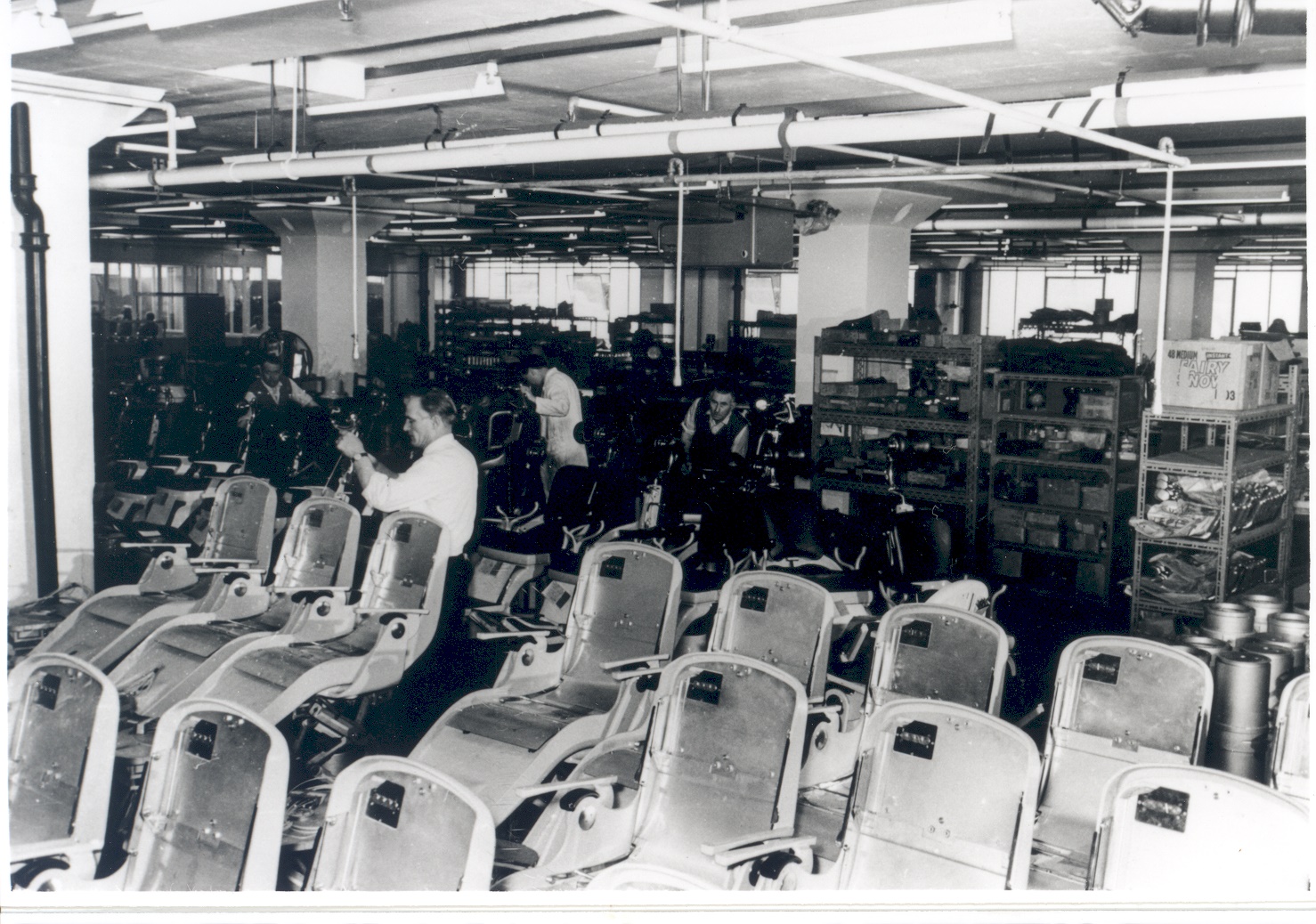Explore the latest news and find out what's on this month
Explore our learning offer for schools, families and community groups
Uncover the rich history of Elmbridge with our latest online exhibitions
Want to discover more about your local area?
Explore the latest news and find out what's on this month
Explore our learning offer for schools, families and community groups
Uncover the rich history of Elmbridge with our latest online exhibitions
Want to discover more about your local area?
 Black and white photograph of exterior view of the Claudius Ash Sons & Co. Ltd. works in Churchfield Road, Walton, showing ivy clad building behind neatly clipped hedge, c.1914.
Black and white photograph of exterior view of the Claudius Ash Sons & Co. Ltd. works in Churchfield Road, Walton, showing ivy clad building behind neatly clipped hedge, c.1914.
Initially producing tools independently, the factory was soon taken over by Claudius Ash, Sons & Company. The Ash Company was a sprawling enterprise with factories and outlets all over Europe.
A double page spread from a 1921 memoir of the Ash Company not only illustrates the “advanced class of work” the Walton factory produced, but also the level of elegance and detail that the dental industry demanded of its products, something which will also be demonstrated through the objects included in this online exhibition.
The Walton site went through its last company transition in 1924 when it became a factory of the Amalgamated Dental Company – one of the world’s leading dental production companies.
Mr. Stan Patto managed the company for a time and was based locally. Elmbridge Museum’s collection of dental tools dates from Patto’s directorship.
As examples of a specific trade, the items on display are fine illustrations of the day-to-day tools of dentists. However, when viewed more broadly, Patto’s rich collection helps clarify and explain industrial processes in the mid-twentieth century.
 The interior of the Amalgamated Dental Factory Works, Walton, c.1967, showing two men working in part of the Dental Chair Assembly Department.
The interior of the Amalgamated Dental Factory Works, Walton, c.1967, showing two men working in part of the Dental Chair Assembly Department.
The Wellington Bomber, designed in nearby Weybridge, is considered one of the most versatile war planes ever flown. Parts from the Walton dental factory helped Surrey produce up to 70 Wellington Bombers a month.
Many European dental factories were destroyed during the War. With increased demand and limited supply in Europe, Walton saw a huge increase in dental instrument orders when the war ended.
However, a lack of available workforce and long turnaround times meant that initial orders could not be met and new orders never materialised. To increase income, the decision was made to manufacture larger, more expensive equipment. Chairs, the very item Walton was once famed for, may have been the factory’s downfall. Below are some photographs of Walton-made chairs: a finished 1948 example and a 1967 production line.
The large equipment enterprise was not wholly successful, and in the 1970s the decision was made to close the factory. The gates were closed for the last time in 1981.
It is very interesting to note that dental chairs – from the decadence of the 1920s that gave Churchfield Road its reputation; through to extremely simple, collapsible field chairs helping the war effort; and the swathes of mass-produced 1960s examples – chart the three main periods of the factory’s life.
An interior view of the Claudius Ash Sons & Co. Ltd. works in Churchfield Road, Walton, in 1914. Three men are working machinery. The man in the middle is wearing white overalls.
An interior view of the Claudius Ash Sons & Co. Ltd. works in Churchfield Road, Walton, in 1914. Ten standing men, in overalls, are working in the grinding shop. The grinding equipment worked by belts from the overhead shafts.
An interior view of the Claudius Ash Sons & Co. Ltd. works in Churchfield Road, Walton, in 1914. Several overalled men are working machinery, possibly lathes, in a large area. The machinery is worked by belts from the overhead shafts.
An interior view of the Claudius Ash Sons & Co. Ltd. works in Churchfield Road, Walton, in 1914. Four overalled men are working in the blacksmith's shop, with a further man to the left writing.
The interior of the Amalgamated Dental Factory Works, Walton, c.1967. A woman and four men are working in the Medical Assembly Department.
The interior of the Amalgamated Dental Factory Works, Walton, c.1967. Five men are working in the Paint Spray Department. There are water damped spray booths on the right and on the left infra-red ovens, chain fed. High class stoving and polyurethane paints were used.
The retirement party for George from the Instrument Department at Amalgamated Dental Co. Ltd in Walton, in the 1950s. George is in the centre of the picture, holding a wrapped suitcase with a picture of a dentist's chair, drill and spitton attached.
Electrical drilling machines in the test room at the Amalgamated Dental Co. Ltd in Walton, November 1945. Oscar Muller, who had been part of the Home Guard and then joined the company as an apprentice electrical and mechanical engineer in 1942, is on the left, and Tom Gilbertson is on the right.
The Amalgamated Dental Works, Churchfield Road, from the High Street end of the road in 1983, two years after its closure. The picture shows some factory gates and a 'Danger, Workers crossing, please drive slowly' sign on the wall.
Intrigued to find out more about noteworthy historical industries set up in Walton? Visit our 'Cecil Hepworth: Cinema's Forgotten Pioneer' online exhibition to learn all about the famous film studios and watch some of the original films produced there.
Go to the Cecil Hepworth online exhibition
Contribute your memories!
Do you remember Walton's dental factory before it closed? Tell us about your own memories here!I used to work in the offices in Churchfield Road from 1974-1978 and Mr. Claud Ash was the boss.
In 1970 I began my indentured apprenticeship under the EITB 5-year training scheme. The first year was at Brooklands Tech followed by Kingston CFE and Poly for the City and Guilds T6. All my memories there have stayed with me as some of the best years of my working life. Being trained in many of the \'shops\' for 3 to 6 months at a time was always so interesting. These included sheet-metal, plating, paint-shop, assembly, capstain lathes, automatic lathes, press-shop, heat-treatment etc. I seem to recall that, as an apprentice we worked through the 73/74 blackouts in the dark cleaning and tidying. The highlight was that i had a rough BMW R60 motorcycle that with the support of all the people in the \'shops\' that I worked in helped to paint, plate, upholster, polish, bead blast it to concours condition. I could not have asked for a better start to working life.
I started work at the Dental in 1964 and 6 months later I became an indentured apprentice and went to Brookland Technical College, Weybridge. In 1971 I transferred to the R&D dept as a Technician in the Medical section which designed products for Medical & Industrial Equipment Ltd a subsidiary of Amalgamated Dental. My father and Uncle also work for the Dental in the Forceps polishing shop where my father was the Charge Hand. He and my Uncle are in the picture of the retirement party. I also recognize some other faces one I believe to Be Ken Kohler My Forman when I started there
Having just found this site I will now look for Pictures and hopefully add more information about the Dental!
You need to be logged in to comment.
Go to login / register